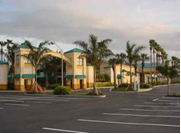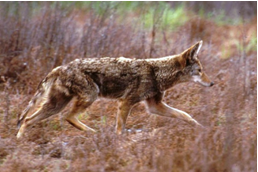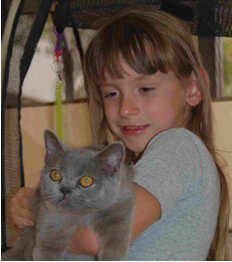
Vol. 4, No. 11, November 2008 |
 Printer-Friendly PDF Version Printer-Friendly PDF Version |
SART Advisory Board Meeting + AWR-151!
|
The Florida SART Advisory Board will meet on December 3rd in the USDA Offices, 8100 NW 15th Place, Gainesville. Following the meeting, lunch will be served on the premises and the Western Institute for Food Safety and Security, University of California-Davis will teach AWR-151: Understanding the Dangers of Agroterrorism. Lunch and course are free of charge for registered attendees.
Veterinary Medical Assn. and was lead for the small animal response.)
- Elected or appointed public officials, and extension advisors NOTE: Please rsvp for the lunch and WIFSS course as soon as possible. Registration: http://wifss.ucdavis.edu/agroterrorism/classes/classesbydate.php. |
||||||||||
|
|
It has been two years since the popular and successful SART Conference in Clearwater. Certainly, it is time to re-focus on the mission and bring attention to the community of responders.
2009 SART Conference-At-A-Glance ?Tentative Agenda Wednesday 1:00 Welcome ?Brevard County FL SART "Where are we?? 1:30 FACA, a SART partner 2:15 ESF 11, USDA (FEMA) 3:30 Citizen Corps (DHS), animal responders 4:15 DOACS, agro-terrorism Thursday 8:00 Agriculture economic impact 9:00 Livestock industries concerns 10:30 Bio-security on the farm 11:30 Awards luncheon 1:00 County ESF 17 ?panel discussion 2:00 Pet-friendly sheltering 3:30 Florida VET Corps "How to use it.? 4:30 Using SART/CART ?panel discussion Friday 8:00 The honey bee crisis: an update 8:30 USAR and animals 9:00 HASMAT training Noon Conference Adjourns
|
[top]
Reminders & Notes of Interest
|
1. "AWR-151 Awareness: Understanding the Dangers of Agroterrorism?will be taught Wednesday, December 3rd in the USDA Offices, 8100 NW 15th Place, Gainesville. Lunch at noon; register at 12:30; class from 1:00 to 5:00. Lunch and training are free, through the Western Institute for Food Safety and Security.
Registration: http://wifss.ucdavis.edu/agroterrorism/classes/classesbydate.php
Information: http://wifss.ucdavis.edu/agroterrorism/classes/course_desc.php
For questions contact Art Johnstone, Director, Office of Agricultural Emergency Preparedness, FDACS (850) 410-6758/251-4184. 2. "AgERT-Agricultural Emergency Response Training?will be held at the Center for Domestic Preparedness in Anniston, Alabama (https://cdp.dhs.gov) from November 30-December 6 and later dates. Contact Gordon Harman at (256) 847-2350 or (301) 332-8390 BlackBerry; harmanr@cdpemail.dhs.gov. |
Many individuals have played a vital role in developing the SART organization in Florida, bringing issues to the fore, and teaching the principles of effective response. Can you name the individuals suggested below?
1. Assoc. Dean for Extension, IFAS/UF, embraced and supported SART concept2. Florida ESF-17 Coordinator
3. Veterinarian, Professor of Virology and specialist in avian-borne diseases
4. Prime organizer for
5. Led Florida EMAC team to Texas following Hurricane Ike
6. First Florida SART Coordinator, now with Texas Veterinary Medical Assn.
7. Designated July 31, 2007 "Animal Disaster Preparedness Day?br> 8. Florida FSA Dispute Resolution Coordinator and SART co-chair
9. Florida State Veterinarian and Chief, Division of Animal Industry
10. Recognized at 2007 SART Conference for service as resource unit leader
11. UAN-EARS responder promoted SART concept in Hillsborough County area
12. Director, Office of Agricultural Emergency Preparedness, DOACS
[top]
It's the little things?
|
According to one on-line dictionary, an aphorism is "a tersely phrased statement of a truth or opinion.?Thus the common saying "It's the little things that will kill you..." would be a statement of truth or opinion. So, which is it: truth or opinion?
the Head (www.cdc.gov/NIOSH/face/stateface/ok/03ok007.html) A consideration of the possibilities then brings us back to the aphorism: "It's the little things that will kill you..." So, which is it: truth or opinion? |
Florida's Feral Canids
|
A Category 4 hurricane sweeps through Central Florida. Millions evacuate, most with their pets, but thousands ?perhaps hundreds of thousands ?do not evacuate. Despite its great population, the region has wonderful woodlands, state parks, forests and even wild lands. There are the usual coyotes, foxes, bobcats and other wild animals (black bears, opossums, raccoons, armadillos) to be aware of, but there is also an indeterminate population of feral dogs...and cats.
Bernice Constantin, state director, USDA/APHIS, Wildlife Services, says his office has not been contacted about feral dog problems in Florida. In Puerto Rico, however, Wildlife Services actively assists in controlling feral canines which have, in isolated cases, attacked cyclists, joggers and entered residents?yards and homes. Since Wildlife Services is not a regulatory agency it does not initiate control efforts, but assists when called upon. Constantin referenced his agency's work responding to the county commissioners in Columbia County. Coyotes are a different story. According to the Florida Fish & Wildlife Conservation Commission (FWCC) they are now found in all 67 counties: most numerous in the Panhandle and least numerous, but increasing in South Florida. Coyotes prey upon goats, calves, hogs, poultry, domestic dogs and cats, watermelons, even small children...whatever does not kill and eat them first. Evidence indicates that light population control via hunting or trapping may even stimulate the coyote population!
Unlike feral dogs, which are released by or escape from their human companions, "Coyotes are here to stay. These animals have been shot, poisoned, trapped, and otherwise harassed by man, yet they have flourished. We should accept their help in controlling rats and mice, respect their tenacity, admire their wildness, and salute their curiosity and playfulness. We should also recognize the potential threat to children, pets, and livestock, not only from direct contact but from their potential to spread diseases such as rabies and canine distemper and be prepared to control the song dog when necessary.?(http://www.canismajor.com/dog/coyote.html#Rab) |
[top]
Self-Test: Fill in the Blanks
|
"In _______ (YEAR), there was a group of agencies and organization who formed a _______ (TYPE OF GROUP) that supported Emergency Support Function _______ (ANIMAL AND AGRICULTURAL ISSUES) at the State Emergency Operations Center. This group is known as the _______ (CURRENT DESIGNATION). This group has met quarterly, participated in emergency response activities, and presented training conferences. By working together we have been able to pool our information and resources to the benefit of the participating entities, their personnel, and ultimately the citizens Florida.?br> Answers at www.flsart.org/county_sart/index.htm. |
FEMA CPG #302 ?"Incorporating Household Pets
and Service Animals Considerations Into Emergency Plans?
and Service Animals Considerations Into Emergency Plans?
Comprehensive Preparedness Guide (CPG) #302 is designed to provide guidance for incorporating Household Pets and Service Animals Plans (HPSAP) into local, state, territorial, and tribal emergency operations plans (EOPs).
| Household pets and service animals play an important part in people's daily lives. A person's decision to take protective action can be greatly influenced by the safety of their animal(s). A HPSAP should be an integral component of an all-hazards local, state, territory, or tribal EOP. Each HPSAP should comply with the PETS Act, which contains the following provisions: ?nbsp; It requires that local emergency preparedness operational plans take into account the needs of individuals with household pets andservice animals prior to, during, and following a major disaster or emergency. ?nbsp; It requires the provision of essential assistance(e.g., rescue,care, shelter, and basic needs) to individuals with household pets and service animals, and to their animals, following a disaster. Excerpt from "Preface" |
|
Exotic Spotlight: The Asian Swamp Eel
Asian swamp eels, originally from Eastern and Southern Asia, were first introduced to the U.S. in Hawaii in the early 1900s. This species adapts quickly to new environments. It has the potential to become widespread in the U.S. and impact a variety of native aquatic and wetland species, and eventually entire ecosystems.
| Asian swamp eels, originally from Eastern and Southern Asia, were first introduced to the U.S. in Hawaii in the early 1900s. This species adapts quickly to new environments. It has the potential to become widespread in the U.S. and impact a variety of native aquatic and wetland species, and eventually entire ecosystems. |
| The Asian swamp eel animals, including frogs, tadpoles and other survive both in hot and known predators in the and can easily move increase their population because they are active |
|
preys on a variety of crayfish, shrimp, worms, fishes. The eels can cold climates, have no U.S., can breathe air, across land! Swamp eels without detection primarily at night. |
| The Asian swamp eel has not yet been found in Everglades National Park, but they have been found less than half a mile from the eastern border of the park. [http://www.fpl.com/environment/exotic/exotic_and_invasive_species_index.shtml] |
[top]
About the SART Sentinel
| Editor: Rick Sapp, PhD, Technical Writer, Florida Department of Agriculture & Consumer Services, Divis of Animal Industry [rsa5@cox.net] Associate Editor: Joe Kight, State ESF-17 Coordinator, Florida Department of Agriculture & Consumer Services, Division of Animal Industry [kightj@doacs.state.fl.us] The SART SENTINEL is an E-mail newsletter prepared monthly by Rick Sapp and the members of the Florida State Agricultural Response Team. Past issues of the Sentinel are archived on the Florida SART Web Site, www.flsart.org. If you have a story or photo that you would like to have considered for publication in The SART SENTINEL, please contact the Editors. |
[top]
|
ANSWERS: Who's Who in Florida SART 1. Joan Dusky 2. Joe Kight 3. Paul Gibbs 4. John Haven 5. David Perry 6. Elizabeth 'Liz?Wang 7. Charlie Crist 8. Tim Manning 9. Tom Holt 10. Martha Wagaman 11. Raquel Aluisy 12. Art Johnstone |












